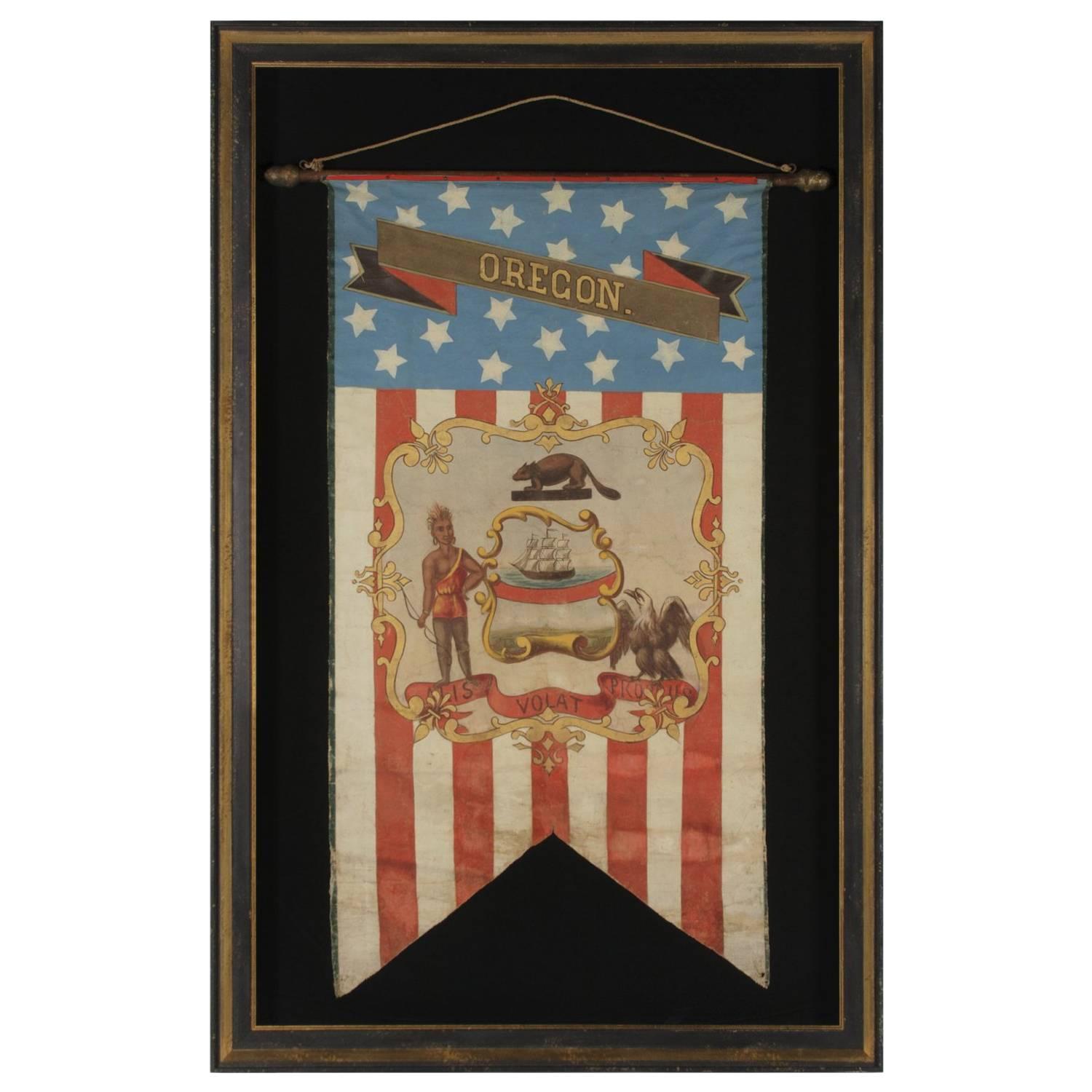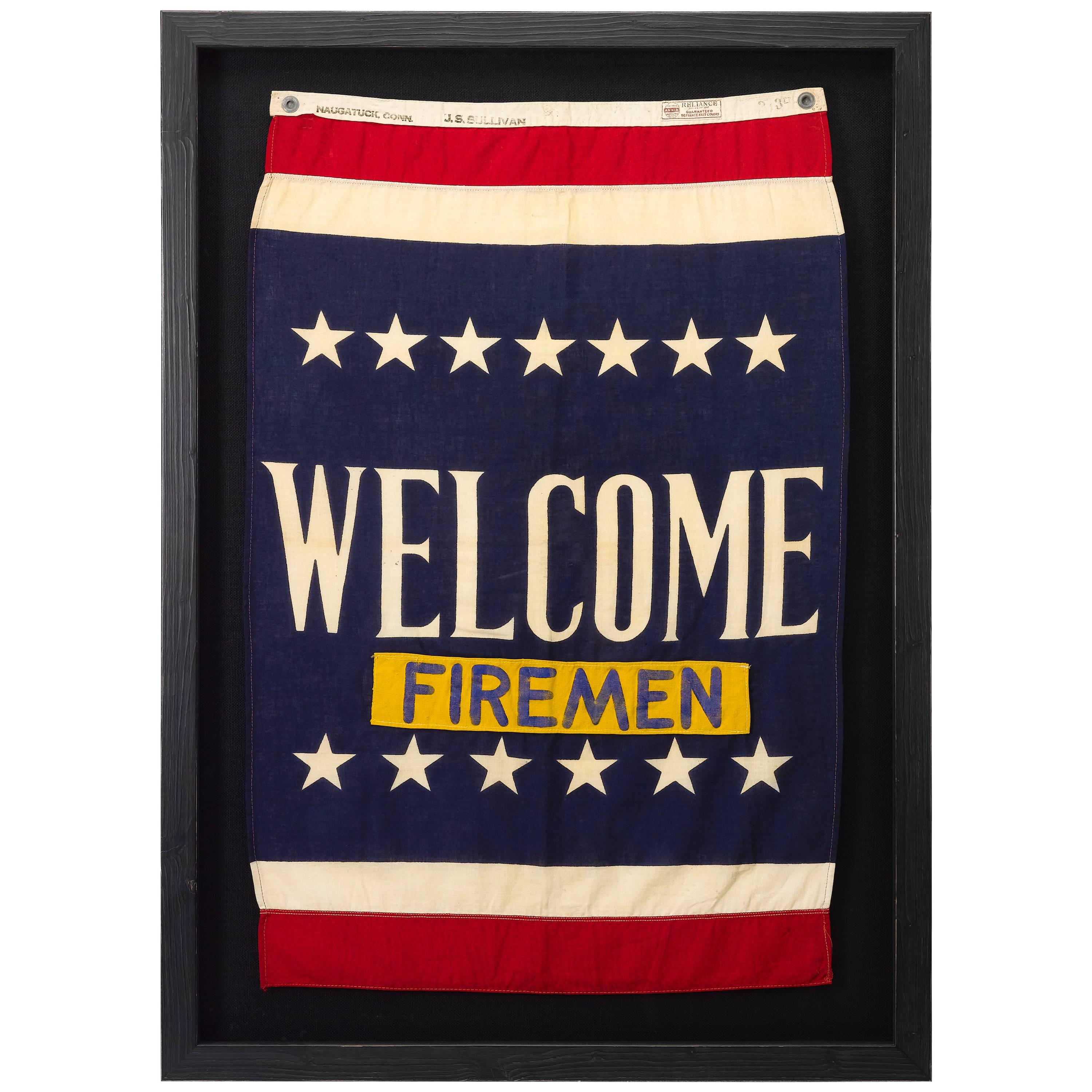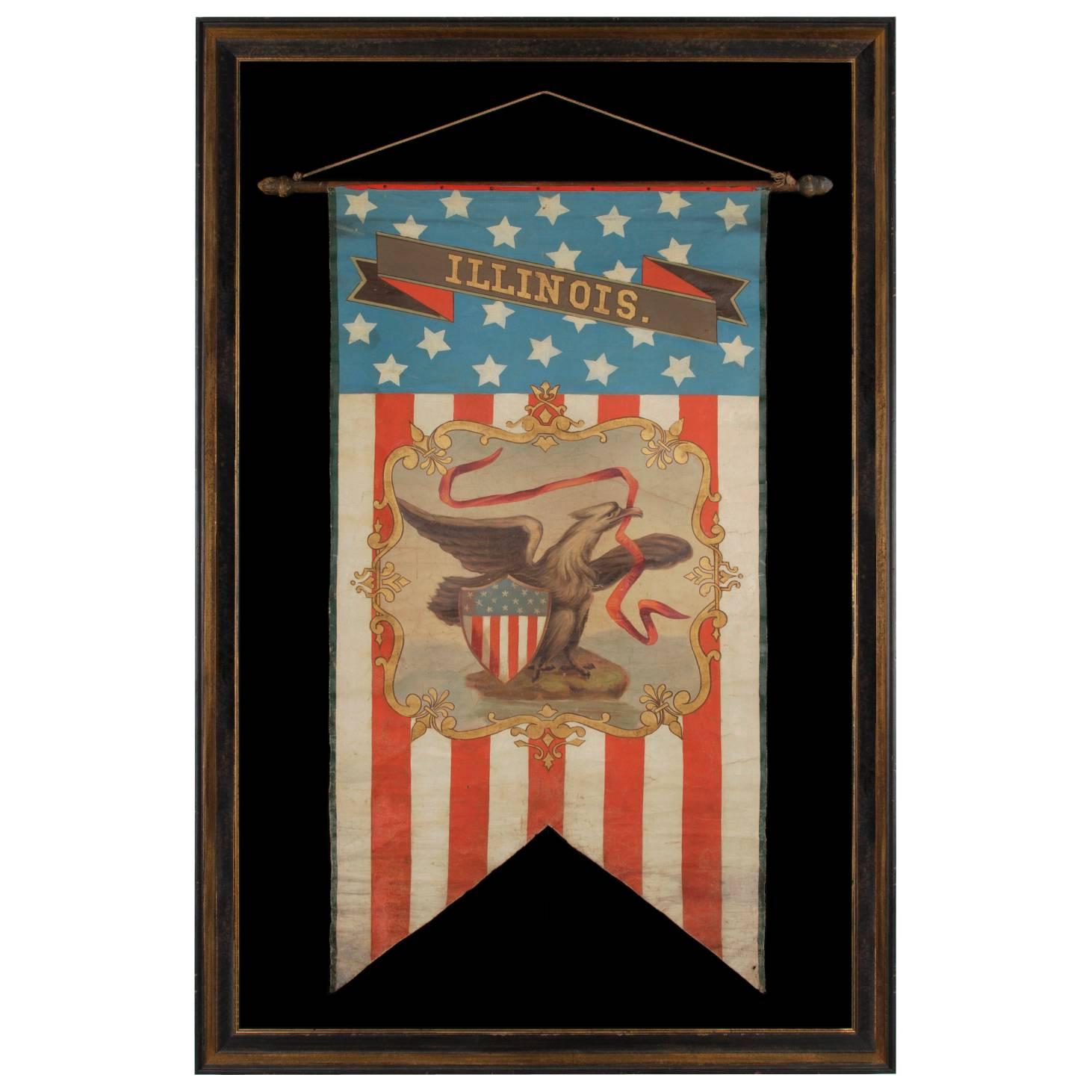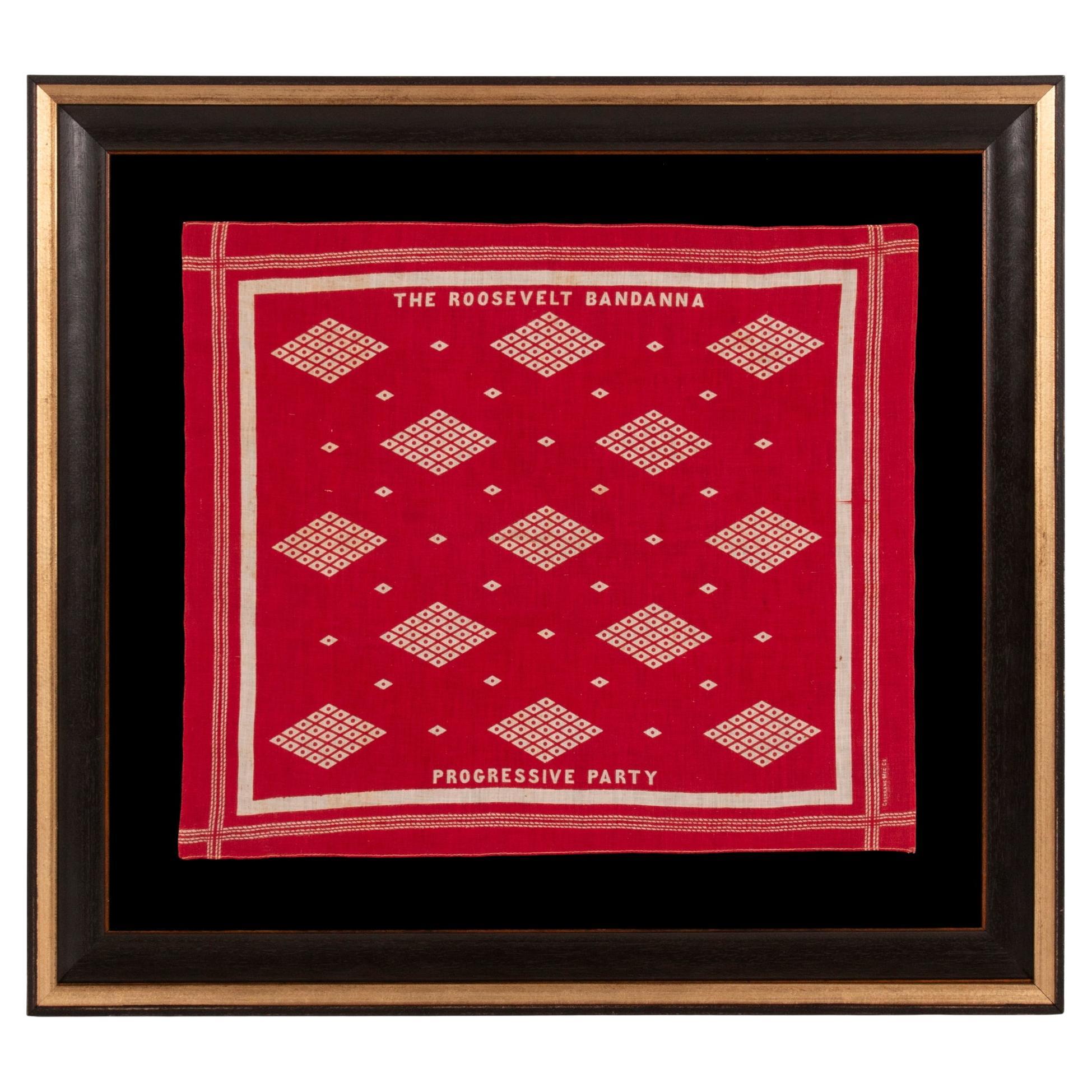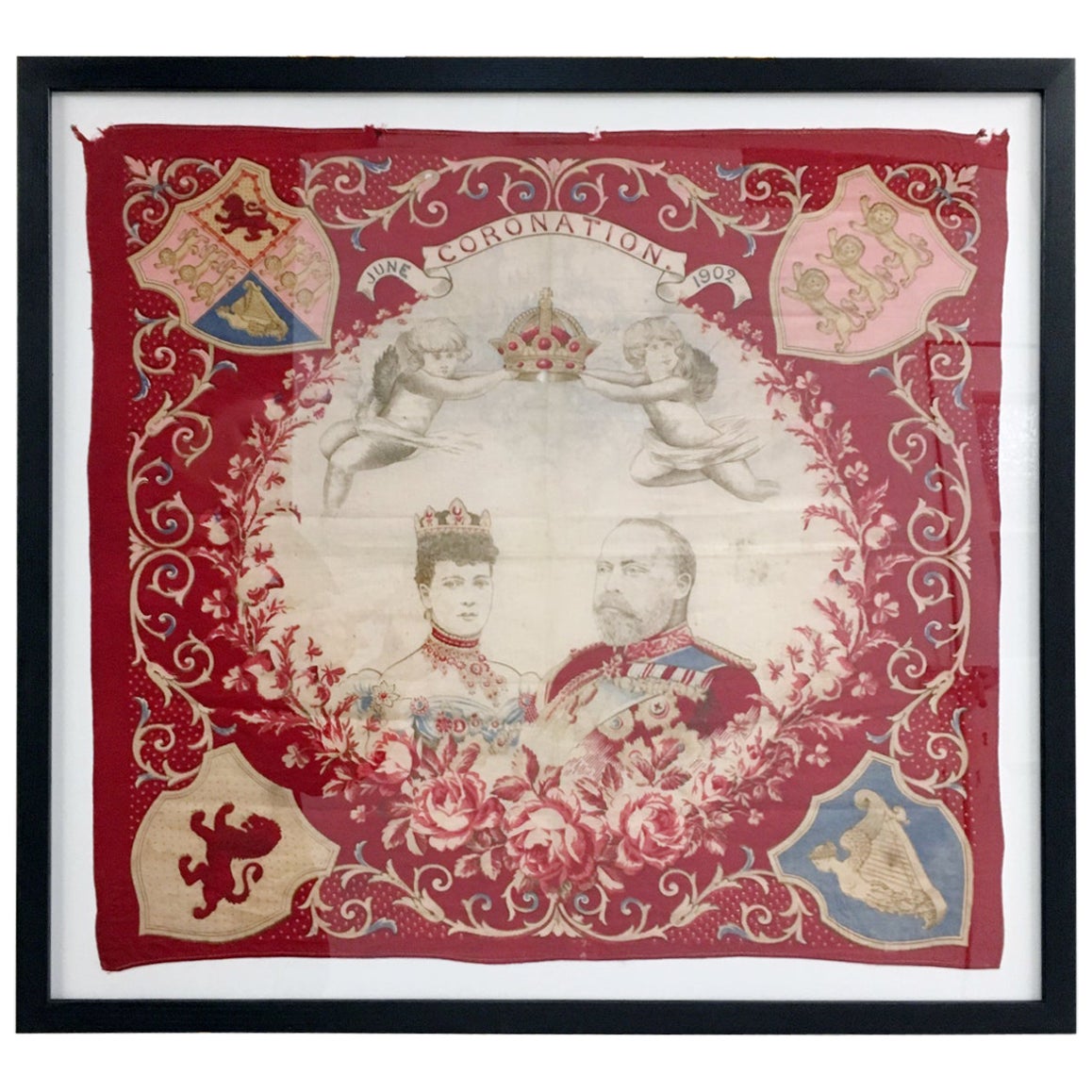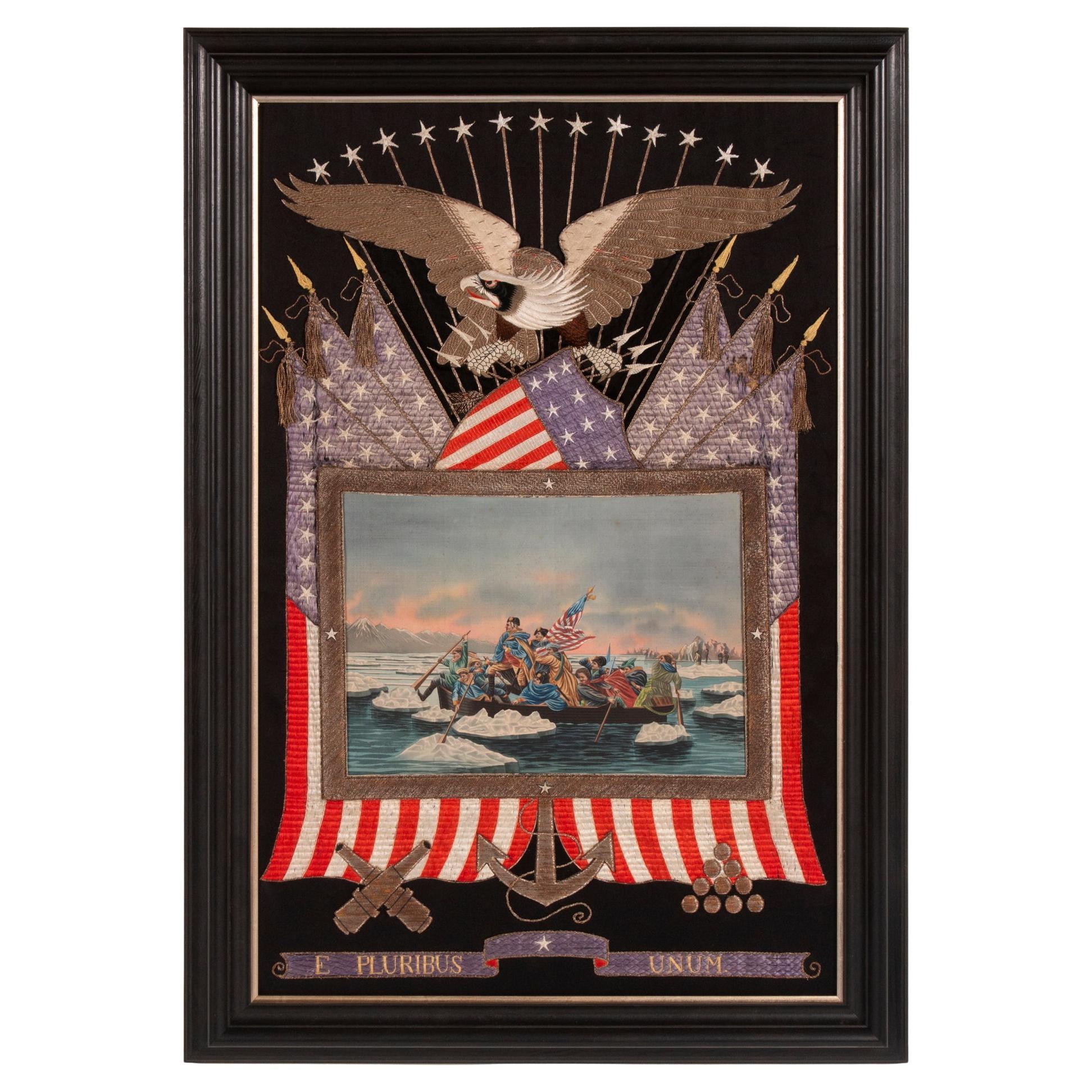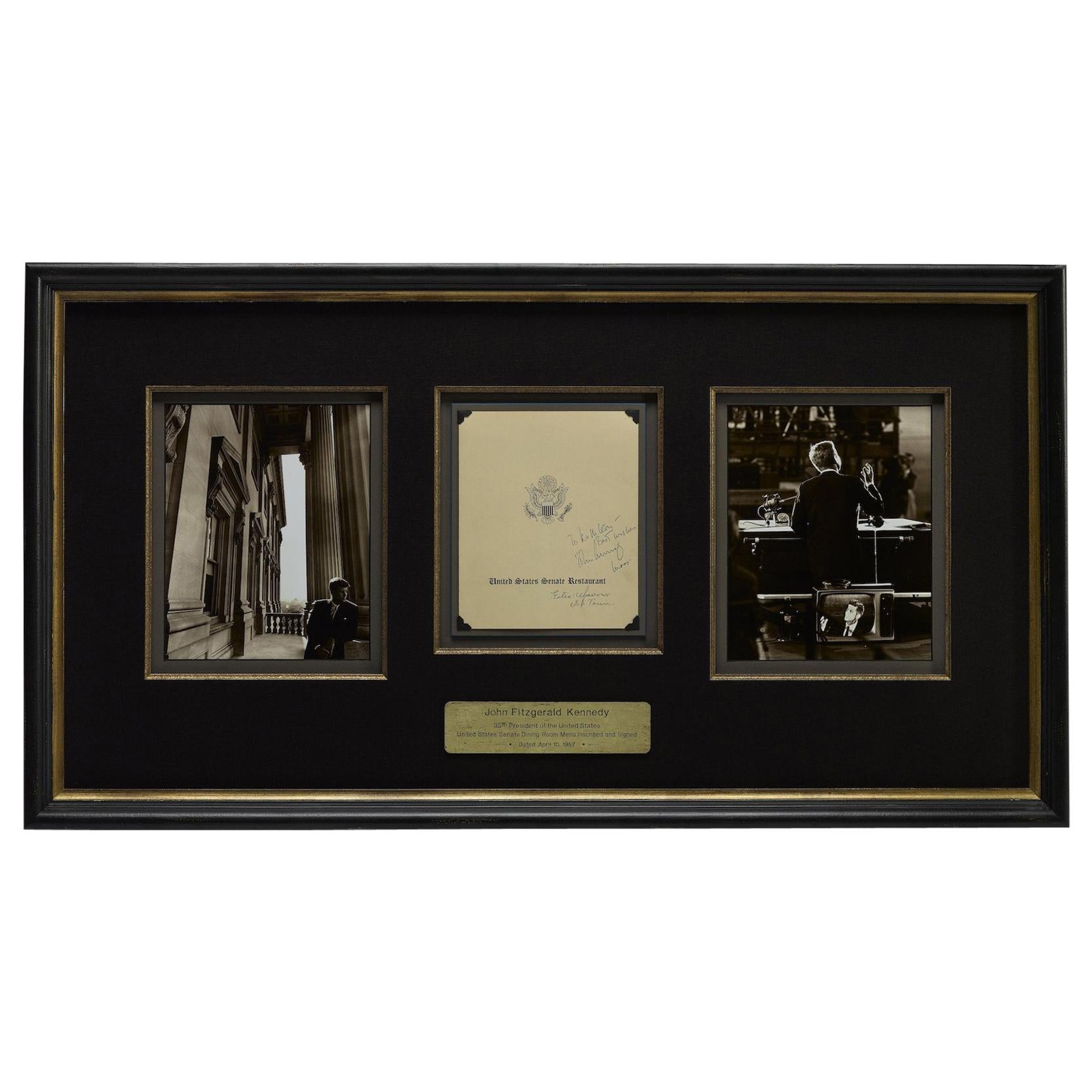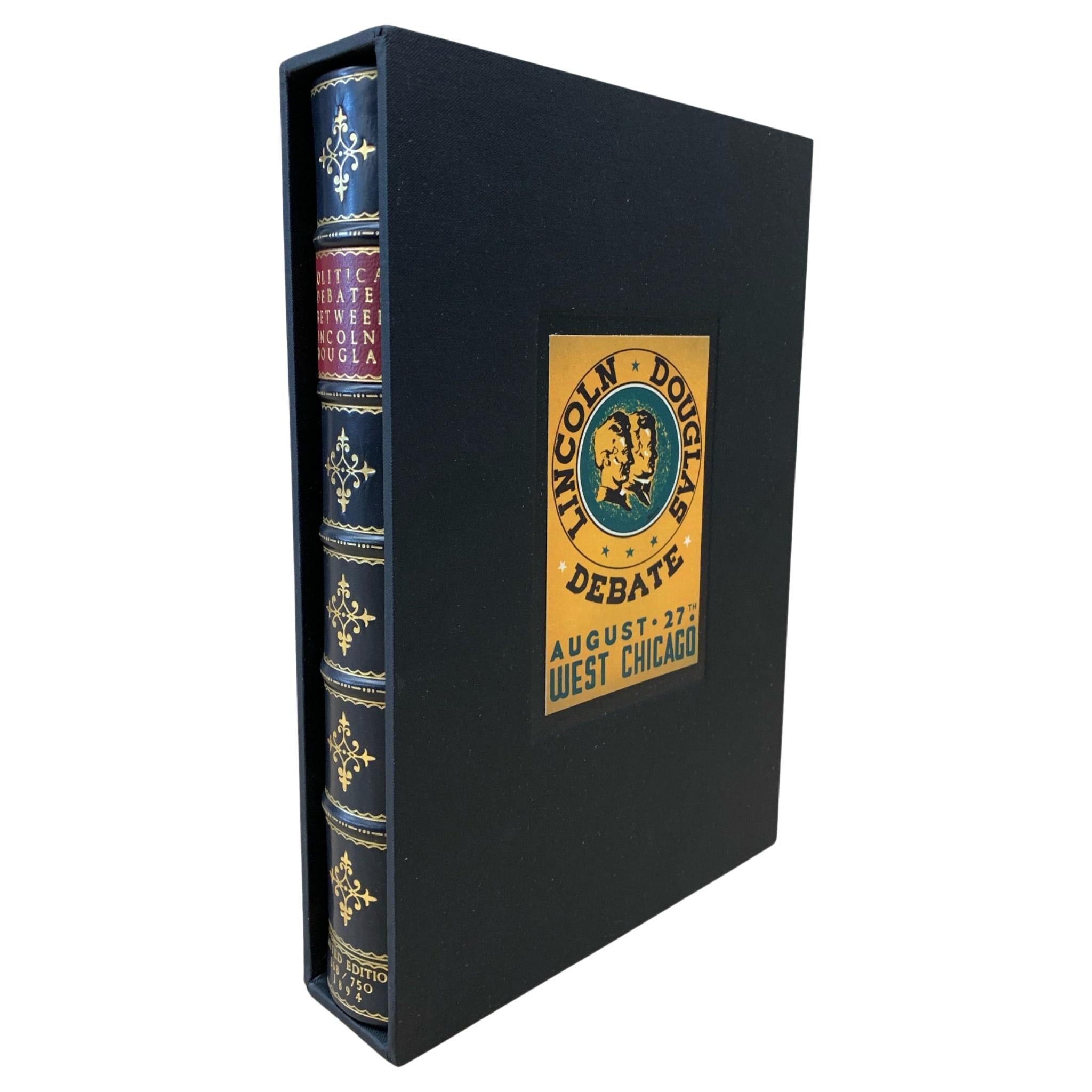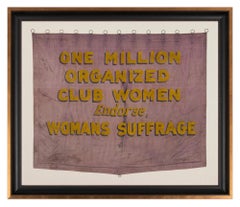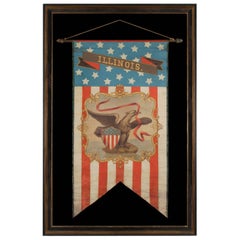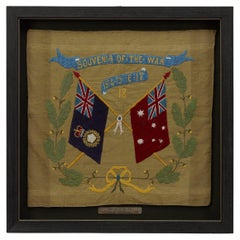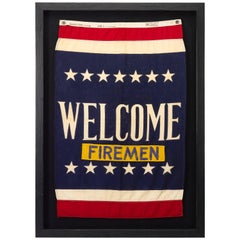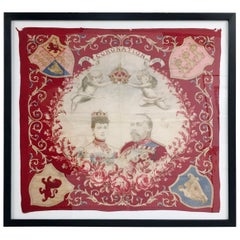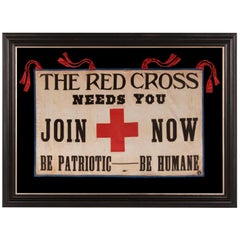
Exceptional Red Cross Banner
View Similar Items
Want more images or videos?
Request additional images or videos from the seller
1 of 6
Exceptional Red Cross Banner
About the Item
- Dimensions:Height: 37.25 in (94.62 cm)Width: 49.5 in (125.73 cm)Depth: 2.5 in (6.35 cm)
- Materials and Techniques:
- Place of Origin:
- Period:
- Date of Manufacture:1917-1918
- Condition:See Item Description.
- Seller Location:York County, PA
- Reference Number:Seller: pat-5901stDibs: LU849716279911
About the Seller
5.0
Recognized Seller
These prestigious sellers are industry leaders and represent the highest echelon for item quality and design.
Established in 1991
1stDibs seller since 2008
61 sales on 1stDibs
Typical response time: 10 hours
More From This SellerView All
- Violet & Yellow Suffragette Parade Banner, Ca 1910-1920Located in York County, PARare violet & yellow Suffragette parade banner, the plate example illustrated in the text reference on the subject, made ca 1910-1920. Hand-painted banners...Category
Early 20th Century Political and Patriotic Memorabilia
MaterialsSilk
Price Upon Request - Hand-Painted Patriotic Banner with the Seal of the State of OregonLocated in York County, PAHAND-PAINTED PATRIOTIC BANNER WITH THE SEAL OF THE STATE OF OREGON AND GREAT FOLK QUALITIES, 1861-1876: Swallowtail format, patriotic vertical banne...Category
Antique Late 19th Century American Political and Patriotic Memorabilia
MaterialsCanvas
Price Upon Request - Hand-Painted Patriotic Banner With The Seal of the State of IllinoisLocated in York County, PAHAND-PAINTED PATRIOTIC BANNER WITH THE SEAL OF THE STATE OF ILLINOIS AND GREAT FOLK QUALITIES PROBABLY MADE FOR THE 1868 DEMOCRAT NATIONAL CONVENTION...Category
Antique 1860s North American Political and Patriotic Memorabilia
MaterialsCanvas
Price Upon Request - Hand-Painted 19th Century Banner with the 1867 Proposed Seal of IllinoisLocated in York County, PAHAND-PAINTED 19TH CENTURY BANNER WITH AN 1867 VERSION OF THE SEAL OF THE STATE OF ILLINOIS, PROPOSED IN THAT YEAR BY THE SECRETARY OF STATE, BUT IN A VARIATION NEVER FORMALLY ADOPTED Banner with the Illinois State Seal, in a rare variation of the design, never adopted. In 1867 Illinois Secretary of State Sharon Tyndale proposed that the phrases in the state motto be reversed. In the wake of the Civil War, (which ended in 1865,) Tyndale suggested that the verbiage be changed from "State Sovereignty--National Union" to "National Union--State Sovereignty,” which made sense given the recent secession of the Southern States, which placed their own interests first. Illinois' own Abraham Lincoln had worked hard to preserve national interests, echoed here in the altering of the language. Though Tyndale’s suggestion was rejected, he was nonetheless charged with creating a new design, which he did and was soon adopted. This displayed the dates of "1818," when Illinois became a state, and "1868," when the seal was officially changed. Interestingly enough, Tyndale did manage to send a message in the new version by turning the word “sovereignty” upside-down , with the surmised explanation that this fit accordingly with the orientation / position of the streamer. The banner is beautifully hand-painted on muslin and retains its original staff. The shape is beautifully scalloped at the bottom edge, which is painted to look as if there is an applied fringe. Most of the elements are congruent with the 1868 version, but there are various differences. Set within a shield-shaped medallion—usually circular—is the expected eagle in a side view, spread wing pose with beak uplifted. The eagle is supposed to be perched upon a rock with one talon, while gripping a Federal shield in the other. Here there is no rock and both talons grip the shield, which displays 13 stars. Note the date of "1867" and Tyndale's preferred order of the wording on the billowing ribbon in the eagle's beak. The foreground of the official design is all grass. Here there are olive branches—a peacetime reference appropriate for a country recovering from war—on a grassy area, set upon a sandy shore before Lake Michigan, with a rising sun on the horizon. Mounting: The banner was mounted and framed within our own conservation department, which is led by masters degree trained staff. We take great care in the mounting and presentation of flags and have preserved thousands of examples; more than anyone worldwide. The background is 100% cotton twill, black in color. The mount was placed in a black-painted, hand-gilded and distressed Italian molding. A shadowbox was created to accommodate the staff. The glazing is U.V. protective plexiglass. Feel free to contact us for more details. Banner - 49" x 56.5" Frame - 67.75" x 59.25" About Jeff R. Bridgman Antiques, Inc.: As an advisor to top museums and collectors alike, Jeff Bridgman is the world's leading expert and source for antique American flags and political textiles...Category
Antique 1860s American Political and Patriotic Memorabilia
MaterialsCotton
Price Upon Request - 1912 Roosevelt Turkey Red Bandana, ca 1912Located in York County, PATurkey red bandanna, made for the 1912 presidential campaign of teddy Roosevelt, when he ran on the independent, progressive party (bull moose) ticket Printed cotton kerchief, made for the 1912 presidential campaign of Theodore Roosevelt when he ran on the Progressive Party ticket (a.k.a., the Bull Moose campaign). This graphic textile, in a classic, western style, typical of the iconic red bandanna, is indicative of both the Republican Party in the late 19th century, and T.R.’s love of the American West. In this example, a geometric design with diamonds, surrounded by multiple, linear borders, is accompanied by the following text along the top and bottom that reads: “The Roosevelt Bandanna” and “Progressive Party,” respectively. A maker’s mark in the lower right corner reads “Cochranes Mfg. Co.” Cochrane’s was known for their long-lasting, red dye process, called “Cochrane’s Turkey Red.”. It was really a process, as opposed to a dye itself, to which the name applied. The dye was actually a derived from a synthetic colorant called “alizarin,” imported by Alexander Cochrane’s family, who emigrated to the United States from 1847, and owned a chemical company in Massachusetts that produced the dye. The fabrics were produced by the family of John Cochrane, who emigrated from Renfrewshire, Scotland in 1844. Both families, who resided in Malden, Massachusetts initially, traced their ancestry to Barrhead, Scotland, in the heart of the textile-producing region, near Glasgow and Paisley. It was in Glascow that Turkey Red printed bandannas are said to have originated, in the shop of Henry Monteith & Company, in 1802.* TR's decision to enter the 1912 election was not exactly popular among many of his friends and former supporters. His participation manifested into a unique political incident, in which the independent, Roosevelt, beat out a major party ticket, garnering 27.4% of the vote. At the same time, however, he lost the White House, not only for himself, but for his former Republican friends as well, by dividing support between his own candidacy and that of incumbent President William Howard Taft...Category
Vintage 1910s American Political and Patriotic Memorabilia
MaterialsCotton
- Elaborate Sailor Souvenir of Washington Crossing the Delaware, ca 1885-1912Located in York County, PAElaborate sailor’s souvenir embroidery from the orient with a beautiful hand-painted image of Washington crossing the Delaware, surrounded by a large eagle, federal shield, crossed flags, a cannon, cannonballs, and anchor, circa 1885-1910: Between roughly 1880 and 1915, American sailors visiting the orient could obtain beautiful needlework embroideries on shore, with patriotic American themes. These extraordinary works of art were acquired as mementos of a long voyage, often with the hope that they might be presented as gifts for loved ones and friends. Using silk floss, elaborately embellished with both silver and gold metallic bullion thread...Category
Antique Late 19th Century Asian Political and Patriotic Memorabilia
MaterialsSilk
You May Also Like
- Souvenir of the War 1914-15-16-17-18 BannerLocated in Colorado Springs, COPresented is a stunning textile banner from the first World War, dating to 1918. The square tan cotton cloth is embroidered with two crossed flags, the ...Category
Vintage 1910s Australian Political and Patriotic Memorabilia
MaterialsCotton
- Vintage WWII U.S. Navy Patriotic Banner, "Welcome Firemen" Flag, circa 1941-1945Located in Colorado Springs, COThis is a beautifully preserved WWII Navy aircraft carrier banner, emblazoned with a welcome for the ship's firemen. The banner is partially printed and has sewn elements. The flag's field is dyed a rich navy blue, with a resist dyed white stripe and a sewn red stripe at both top and bottom. A large "WELCOME" is resist dyed at center, in big white letters. This is followed by a sewn yellow strip of contrasting fabric, printed with the word "FIREMEN" in blue. Thirteen white stars complete the design of this patriotic piece of WWII and Navy history. The banner retains its original white hoist, with two metal grommets on each side, for ease in display on the ship. Along the center of the hoist is the printed name of "J.S. Sullivan." "Naugatuck, Conn." is printed along the left and the size "2 x3 FT" is printed along the right. The flag maker, Annin, has sewn in its label, boasting "guaranteed defiance fast colors." CONDITION: Very good condition, considering age and past use. Partially printed and hand-sewn flag construction. Some toning to the white of the flag and along the top hoist. Original grommets at left and right of the hoist. The flag measures 36" X 22". Expertly framed on black linen with an antiqued black wood...Category
Vintage 1940s American Political and Patriotic Memorabilia
MaterialsLinen
$2,500 Sale Price36% Off - King Edward VII Coronation, June 1902 Framed Red FlagLocated in Hastings, GBKing Edward VII coronation, June 1902 framed scarf / flag. This scarf is an original antique piece of British history and patriotic memorabilia. ...Category
Antique Early 1900s British Edwardian Political and Patriotic Memorabilia
MaterialsCotton
- John F. Kennedy Signed Senate Menu CollageLocated in Colorado Springs, COPresented is a John F. Kennedy inscribed and autographed United States Senate Restaurant menu. Kennedy signed the menu on April 10, 1957, when he was a Senator representing the state of Massachusetts...Category
Vintage 1950s American Historical Memorabilia
MaterialsPaper
$8,160 Sale Price20% Off - 46-Star American Flag Printed in Drum Star ConfigurationLocated in Colorado Springs, COThis is an original 46-Star American parade flag, celebrating Oklahoma statehood. Each star on the flag's canton represents a state in the Union at the time. The official flag design would update every July 4th, to include any new states added to the Union in the past year. Oklahoma, the 46th state, entered the Union on November 16, 1907. As such, this 46–star flag was the official flag of the United States from July 4, 1908, until July 4, 1912. The silk flag has a dark blue canton with 46 white printed stars. The stars are printed in an 7-8-8-8-8-7 row configuration, or “Drum design.” The flag design is completed with 13 alternating red and white stripes, each stripe representing one of the original thirteen colonies. The land that comprises Oklahoma today was added to the United States as part of the Louisiana Purchase of 1803. Throughout the 19th century, the U.S. government relocated Indian tribes from the southeastern United States to the area, and by 1900, over 30 Indian tribes had been moved to what was originally called the Indian Territories. At the same time, ranchers in Texas began to move into the area in search of new pasture lands. Although stipulations in the Indian Relocation Act agreed that the land would forever be Indian Territory, the promise of fertile farmland trumped the government’s promise of sovereignty. On April 22, 1889, they opened the land to settlement by homesteaders, creating a land run in which settlers, called “Boomers,” were allowed to cross the Texas or Arkansas border at a particular hour to claim homesteads. Settlers who illegally crossed the border earlier to stake prime land were called “sooners,” which eventually became the state’s nickname. Wagons and the Santa Fe railroad carried cartloads of men and women to blank town sites and building plots, creating ten thousand-people communities in a matter of days. The following year, the region was further divided into Indian Territory and Oklahoma Territory...Category
Vintage 1910s American Political and Patriotic Memorabilia
MaterialsSilk
- Political Debates Between Abraham Lincoln & Stephen A. Douglas, Limited EditionLocated in Colorado Springs, COLincoln, Abraham and Stephen A. Douglas. Political Debates Between Hon. Abraham Lincoln and Hon. Stephen A. Douglas, In the Celebrated Campaign of 1858, in Illinois, Including the Preceding Speeches of Each, at Chicago, Springfield, Etc.; Also, the Two Great Speeches of Mr. Lincoln in Ohio, in 1859. Cleveland: The Burrows Brothers Company, 1894. Limited edition printing, No. 168 of 750. Presented in ¼ leather and cloth binding, with gilt titles and raised bands to spine, with a new archival cloth slipcase. This is a special limited edition printing of the political debates of Lincoln and Stephen Douglas...Category
Antique Late 19th Century Political and Patriotic Memorabilia
MaterialsPaper
Recently Viewed
View AllMore Ways To Browse
Antique American Flag Pin
Antique Bee Pin
Antique Mormon
Circular Tie Dye
John Horse Seminole
Robert Willson
Vintage 50 Star American Flag
Civil War Broadside
Denim Flag
Antique Truncheon
Grand Army Of The Republic
John Haley Bellamy
Recruitment Broadside
Sewing Clamp
Vintage 13 Star Flag
William Schlesinger
Alva Vanderbilt
Antique Hankerchief


